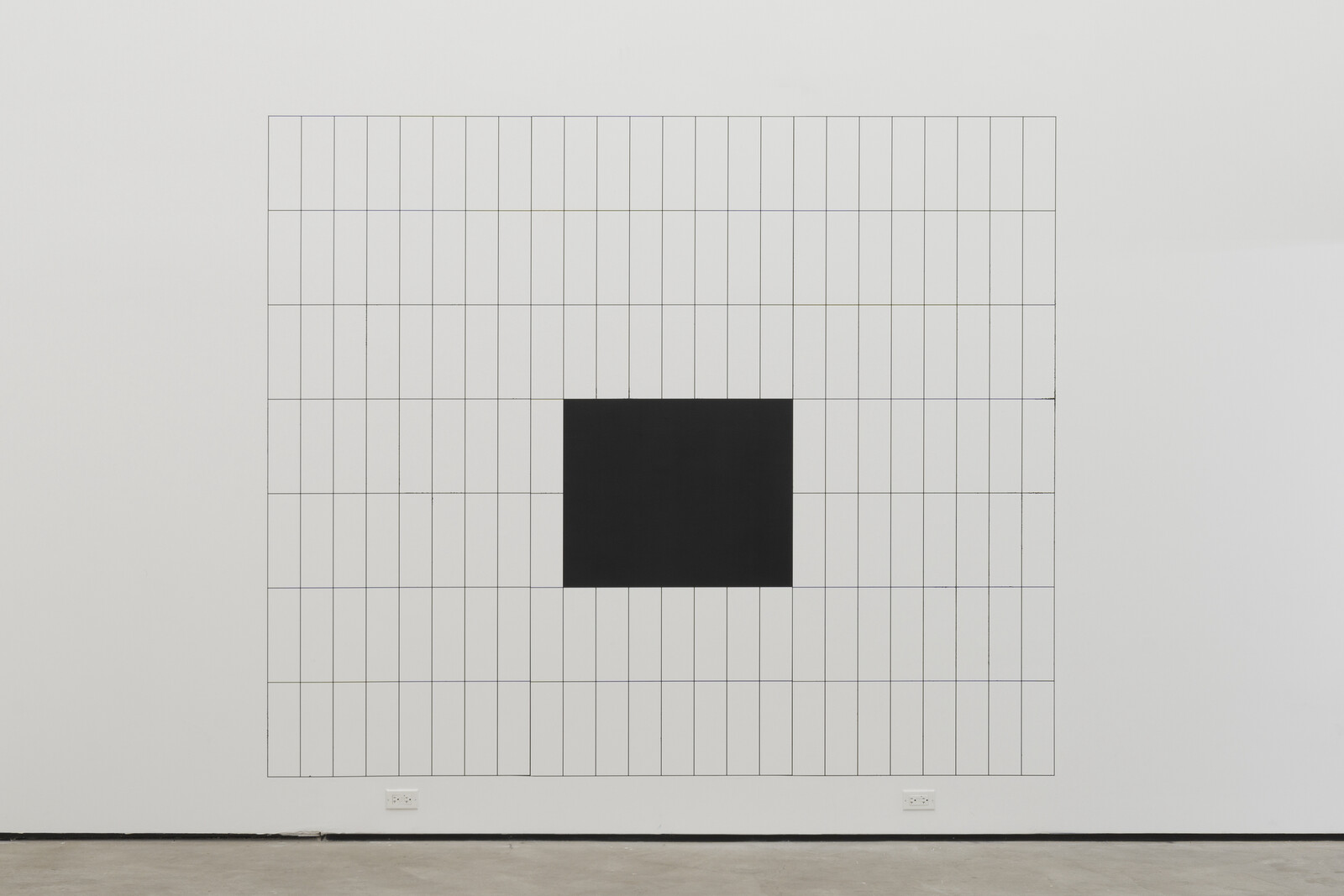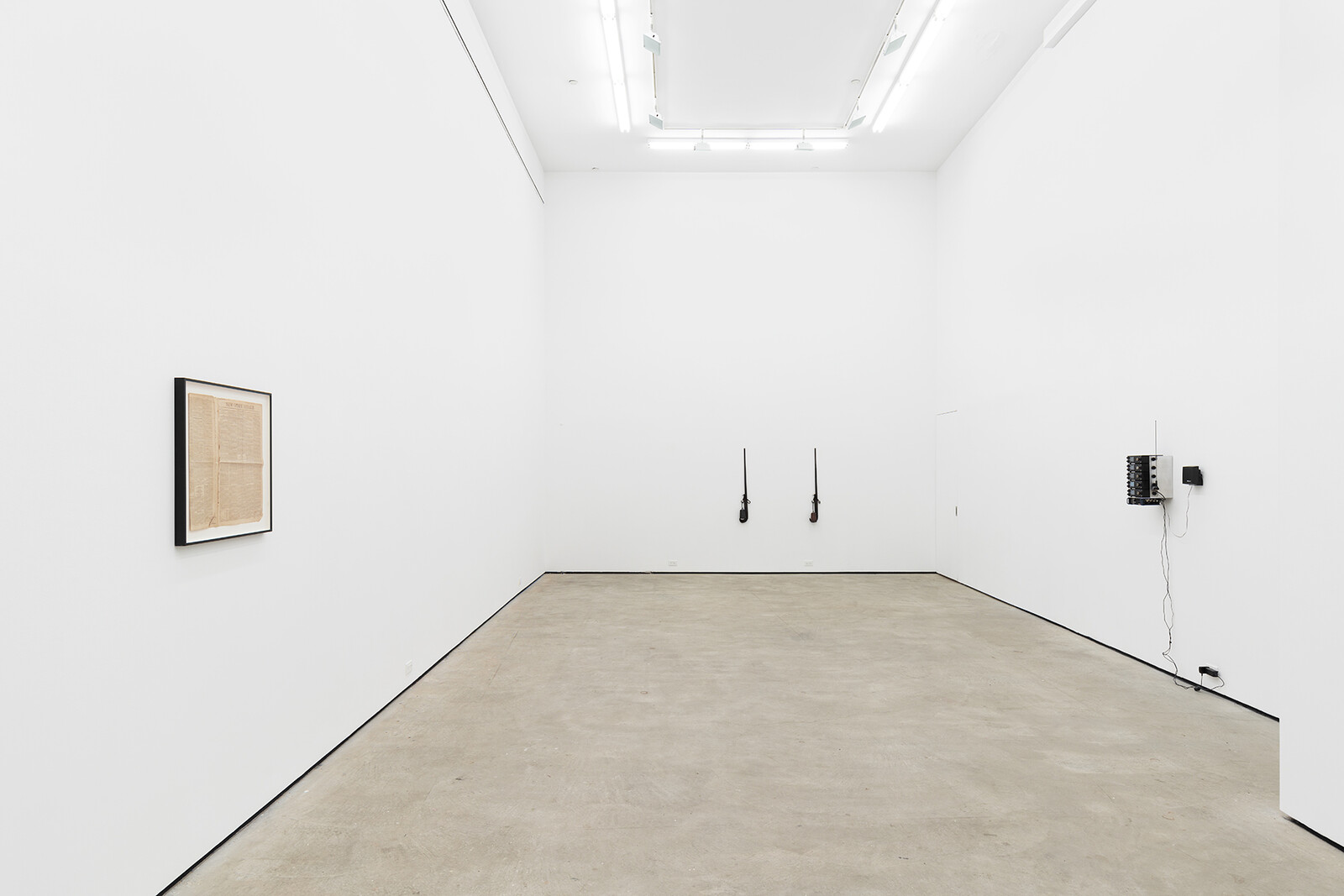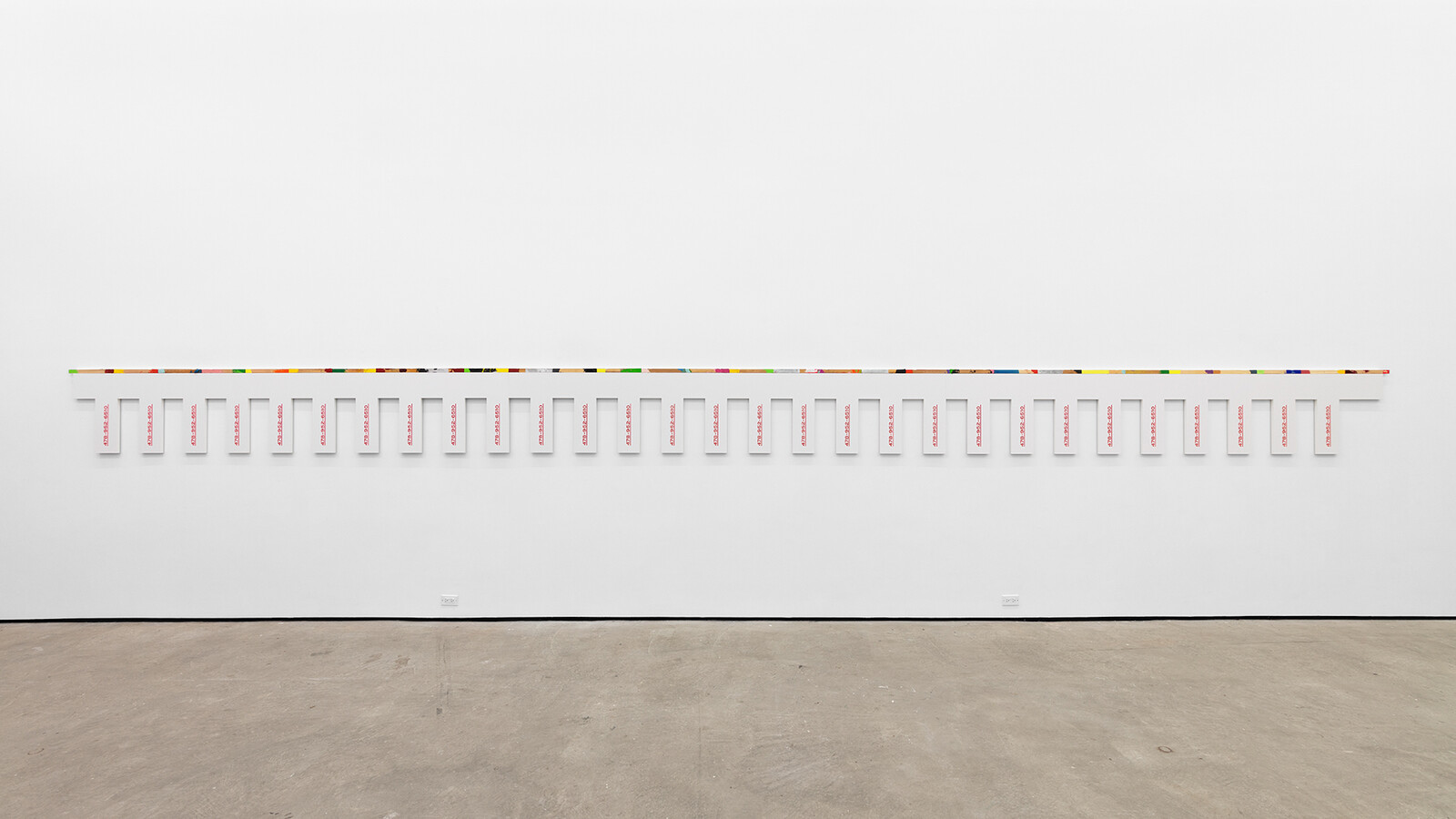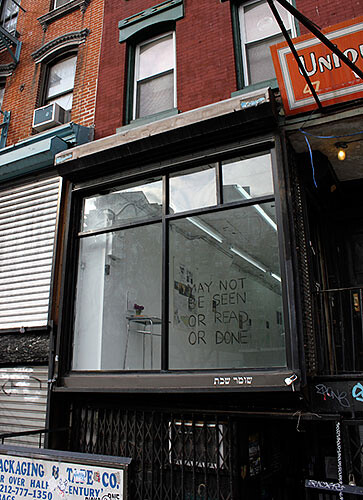Categories
Subjects
Authors
Artists
Venues
Locations
Calendar
Filter
Done
September 27, 2022 – Review
Ghislaine Leung’s “Balances”
Katherine C. M. Adams

What one sees of Ghislaine Leung’s “Balances” depends on precisely when one visits the exhibition. During Leung’s own “studio hours” (9 a.m. to 4 p.m., Thursday and Friday), Gates (2019) lines the main gallery space with child safety gates. The work’s three editions—each a different neutral shade—have been installed on top of each other: sometimes they occupy the same elevation of the wall in dense proximity, and at other points are stacked vertically. Directly before the first group of Gates is one half of Monitors (2022)—a baby monitor transmitting live footage of the gallery’s back office. Other works on view in the central space include Fountains (2022), a small readymade, three-tiered fountain burbling loud enough to “cancel sound” in the vicinity, as the work’s score instructs. A partly filled rectangular grid the size of Leung’s studio wall, Hours (2022), covers the largest wall.
Outside these hours, the gallery is apparently blank, all works removed or covered over. “Balances” exercises an unusually strict control over the terms of encounter with its work, calibrating the viewing situation to the artist’s allocated studio time for art production. In a correspondence with the gallery reproduced in the show’s press release, Leung explains the three-way …
May 27, 2021 – Review
Cameron Rowland’s “Deputies”
Alan Gilbert

Cameron Rowland’s artworks sometimes feel as if they are meant to serve as illustrations for a text or historical thesis. I don’t say this as a criticism. His breakout 2016 exhibition “91020000” at Artists Space in New York City contained previously manufactured items—to use the term “readymade” would already begin to aestheticize them—that partly functioned as visual counterparts to their captions and to an accompanying essay made available as a pamphlet. Displaying desks and benches made by inmates, “91020000” addressed the prison-industrial complex, which disproportionately incarcerates Black men and is a crucial node in slavery’s ongoing legacy in the United States.
Rowland’s current exhibition, “Deputies,” contains four object-installations (all undated) and a longer essay also available in takeaway pamphlet form. The theme here is the origins of policing in the United States with the establishment of slave patrols that monitored and disciplined the subjugated and hunted down fugitives. With a nod to site-specificity, the exhibition focuses on New York City (where the first official U.S. police force was created following the passage of the 1844 Metropolitan Police Act), and extends outside the gallery space to five benches installed in a nearby park, each one paying homage to a different unmarked …
January 6, 2021 – Review
SoiL Thornton’s “Does productivity know what it’s named, maybe it calls itself identity?”
Rahel Aima

In SoiL (formerly Torey) Thornton’s 2019 solo show at London’s Modern Art, a Macon, Georgia-area number was spray-painted across one corner of the gallery. In their current show at Essex Street, New York, the same number repeats on a crenellated Formica tear-off flyer, titled Dematerialize now but as self portrait to whom (1990-2020 Labor Cont(r)act) (all works 2020 unless otherwise stated), an oversize version of the kind you might see advertising piano lessons or rooms for rent. Used paint sticks along its top edge create an overall effect of a printer test page. But here, it’s the artist that’s for sale in one of the most frankly exciting shows I’ve seen this past year. Call them, maybe.
In 2020, art institutions sought to offer a corrective to the historical marginalization of BIPOC artists. Or perhaps dealers are more interested in meeting the predictable uptick in market demand. In the aptly titled “Does productivity know what it’s named, maybe it calls itself identity?” Thornton unpicks this fetishization of identity and, as their diaristic exhibition text puts it, “biography as trap.” They wonder whether the cultivation of individual celebrity—especially one whose work is predicated upon their racial or gender identity—is a …
February 9, 2012 – Review
Peter Fend’s "Über die Grenze: May Not Be Seen or Read or Done"
Colby Chamberlain

When it comes to Colab, there’s not yet a definitive history. From one perspective, Collaborative Projects was an artist-run funding scheme struck up during the fabled efflorescence of late-70s downtown New York; it consisted mostly of clashing egos who tolerated one another for the sake of self-advancement and government support, and from this melee of backscratching and backbiting sprang several major careers, including those of Jenny Holzer, Kiki Smith, and Tom Otterness. From another, Colab was a model of artist-initiated collective action that devised alternatives for exhibition and film distribution; made inroads into mass media, particularly cable television; and marshaled forces in Manhattan’s intensely local struggles over tenants’ rights and urban development. No doubt, both angles possess an aspect of truth, but, for anyone convinced that present-day artistic practice plays off the past’s unfinished projects, there are considerable stakes in exploring the possibilities of the latter—just as there were stakes for the neo-avant-garde in unearthing the radical aspects of constructivism that had been buried under formalist accounts privileging Naum Gabo and Antoine Pevsner. Much as the historical revisions of the Soviet avant-garde cast Tatlin and Rodchenko as leading protagonists, a strong assessment of Colab today would likely train a spotlight …
